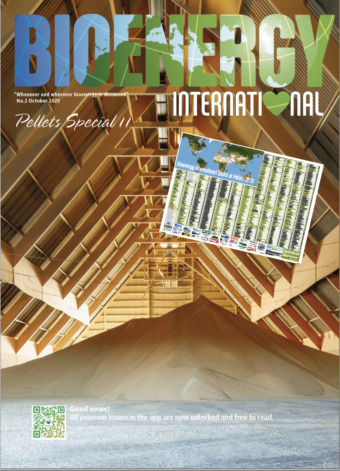Biomethane, also known as renewable natural gas (RNG), is emerging as a key solution to looming gas shortfalls on Australia’s east coast, while giving hard-to-abate sectors the most affordable pathway to cut emissions and stay competitive, a new report released by Bioenergy Australia has found.
These are the key findings in Bioenergy Australia’s “Unlocking Renewable Natural Gas to Enhance Energy and Maintain Australia’s Manufacturing Sector“ report, which argues that Australia is uniquely positioned, thanks to its agricultural strength and abundant organic waste, to become a renewable gas powerhouse for both domestic use and export.
As Australia enters a pivotal stage in its clean energy transition, and with gas shortages set to intensify from late 2025, the report declares renewable natural gas (RNG) as the most affordable and practical way to strengthen energy security while providing manufacturers and gas-intensive industries with a viable path to decarbonization.
Manufacturing is reliant on gas
The report highlights the core dilemma facing Australian industries. Sectors such as steel, food processing, glass, brick, cement, and manufacturing remain heavily reliant on gas for the high-temperature heat essential to their operations, while low-emissions alternatives are either unavailable or unviable.
This reliance on gas is most pronounced in Australia’s AU$100 billion manufacturing sector, which consumed 292 petajoules of the 1,077 PJ of fossil gas used nationwide in 2022–23, making it the country’s largest industrial gas user.
And with the Australian Energy Market Operator forecasting almost no decline in industrial gas use through to 2043, the need to provide manufacturers with a viable, low-emissions alternative has never been more urgent.
With the supply of natural gas under sustained pressure, Australia is at risk of heading into a period of real energy vulnerability. Renewable natural gas gives Australia a genuine low-emissions alternative that can be delivered through existing infrastructure, helping to safeguard our most critical sectors in this important energy transition, said Shahana McKenzie, CEO of Bioenergy Australia.
Diversity of available feedstocks
The report highlights the enormous range of feedstocks available in Australia, from agricultural residues to landfill and wastewater, drawing on Energy Networks Australia’s (ENA) newly released report “Biomethane Opportunities to Decarbonise Australian Industry: Converting Waste into Grid-Injectable Biomethane“, also released on July 31, 2025.
ENA estimates that approximately 400 petajoules (PJ) of biomethane could be recovered today from existing sources – more than twice the annual gas consumption of Australian households.
If we want a Future Made in Australia, we have to give our manufacturers and industrial companies the tools to decarbonise without disruption, helping them to lower their carbon emissions whilst maintaining their global competitiveness. Australia has all the ingredients and the ingenuity to become a renewable natural gas superpower, with its vast agricultural resources, access to organic waste, and an established gas network, said Shahana McKenzie.
Unique opportunity to get ahead
This potential is no longer theoretical. Europe is already demonstrating what’s possible, with France rapidly expanding its network of biomethane plants and Denmark now sourcing nearly 40 percent of its gas from biomethane – much of it derived from agricultural waste such as cow manure – on the journey towards 100 percent replacement by 2034.
There are now more than 1,650 biomethane plants operational in Europe, feeding into gas networks, powering industrial estates, fuelling vehicles and vessels.
The report notes that while RNG is currently more expensive than conventional gas due to capital-intensive projects and a lack of scale, targeted policy measures could significantly reduce costs and improve competitiveness.
This includes introducing feed-in tariffs (FiTs) or premiums for biomethane injected into the gas network and providing long-term price certainty to attract investment.
Guaranteed access to gas infrastructure is also essential to ensure RNG projects can connect to the grid and scale efficiently.
Australia’s success with wind and solar, driven by the Renewable Energy Target, shows what’s possible. Similar mechanisms are now needed to unlock RNG investment, drive down costs, and build a competitive, low-emissions gas sector. Australia may be at least two decades behind Europe on renewable gas, but we have a unique opportunity to not just catch up but leap ahead – if we put the right policy settings in place to deliver investment certainty, Shahana McKenzie said.
Inaction increases economic risk
Amid rising trade tensions, the report warns of the growing economic risk to Australia’s exports if gas-reliant sectors fail to decarbonise.
Nearly half of Australia’s top exports – worth over AU$316 billion – depend directly or indirectly on fossil gas, particularly in industries like aluminium, fertilisers, and processed metals, where gas is used for high-temperature heat or as a chemical feedstock.
As global markets demand lower-emissions supply chains, Australia risks losing market share or attracting additional carbon tariffs.
The joint release of these complementary reports sends a powerful message: Australia’s Renewable Natural Gas industry is ready to power the nation’s future, but urgent, coordinated policy action is needed to unlock its full potential and deliver significant benefits.



